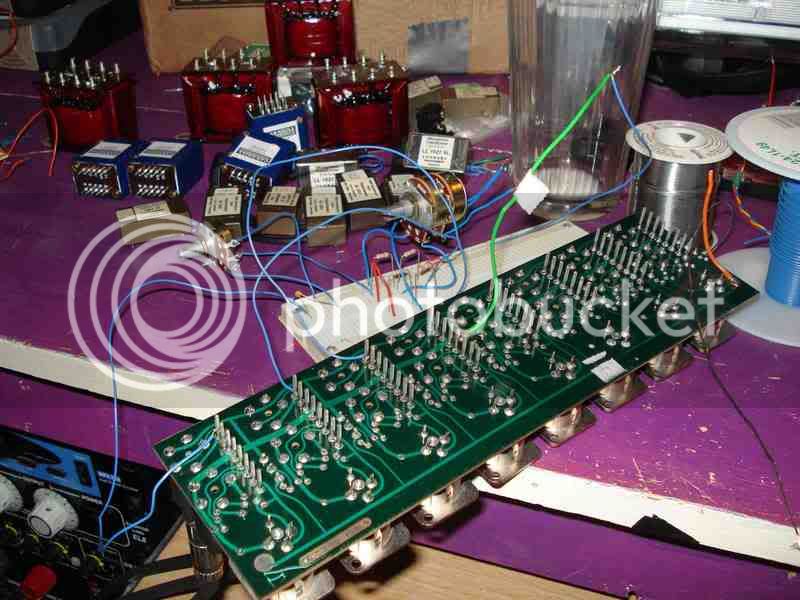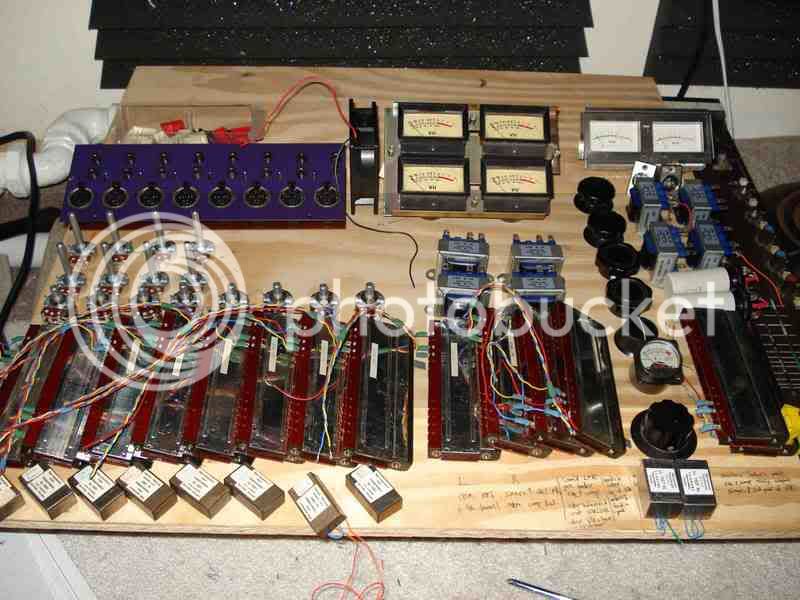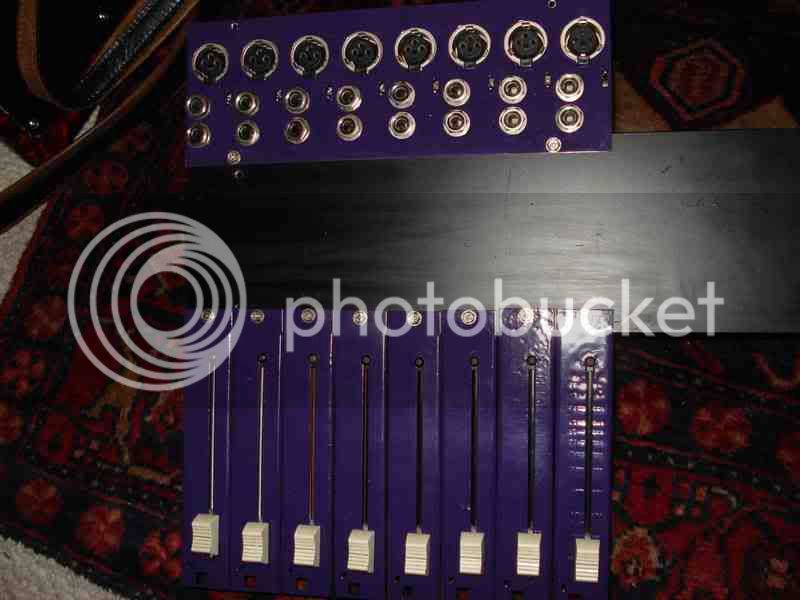I have one qustion though.....How much buffering can one opamp provide?
It depends on the opamp, and what kinda of load it has to drive. you need to figure out the equivalent value for all of the series/parallel resistances that follow it (including the feedback resistor).
Something cheap like a TL07x might not want to drive less than maybe 2K before it gets unhappy. A 5534 will do 600 ohms, but not much less. Various discrete/hybrid amps can drive below 600...Hardy rates the 990 to 75 ohms, and 2520's are similar.
This is one of those applications where discretes really come into their own.
In this case it's buffering two aux sends and the master/groups but is it also possible to make the channel assignable to a group AND the master?
In addition to the ways Dave mentioned above, one way would be to move the buss feed resistors in front of the assign switches, and make it so the assign switches switch those resistors between the panpot and ground (Soundcraft 600 is one example of this...schems downloadable from Soundcraft). That channel feed to the buss then floats when not assigned.
This keeps the panpot load constant, but does it at the expense of changing the buss source impedance as channels are added/removed. This means that the gain applied by the summing amp will change as the load changes, altering the gain-bandwidth product. With a really high GBW amp, it's bandwidth externally constrained with a small feedback cap, and not too many channels, this might not matter to you.
Dave - your new channel schematic look like what I'd been working on for the AC-coupling and optional ground sense resistors. A question about one of the changes. I notice you changed the aux pots to 2.5k, and added series resistors in fron of them. Did you change the pots so they'll be a little more immune to the loading of the 10K buss feed resistors, then add the 2.2K series resistor to keep the overall load of the aux sends a bit higher? This also makes a roughly 6dB loss to the aux busses, so their gain structure followes the stereo buss better, right?
















![Soldering Iron Kit, 120W LED Digital Advanced Solder Iron Soldering Gun kit, 110V Welding Tools, Smart Temperature Control [356℉-932℉], Extra 5pcs Tips, Auto Sleep, Temp Calibration, Orange](https://m.media-amazon.com/images/I/51sFKu9SdeL._SL500_.jpg)











